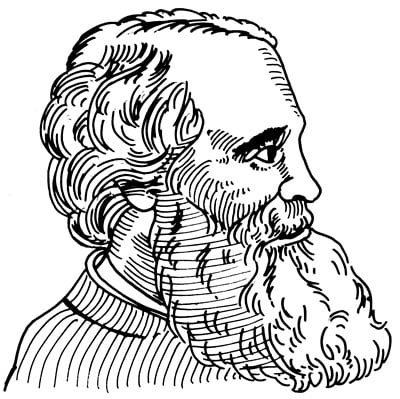
James Clerk Maxwell was born in Edinburgh, Scotland. Maxwell’s early education was provided by his Christian mother and included studying the Bible. Maxwell went to Edinburgh Academy in his youth. In 1845, at the age of 14, Maxwell wrote a paper describing mechanical means of drawing mathematical curves with a piece of string.
In 1854, Maxwell graduated in mathematics from Trinity (scoring second-highest in the mathematics exam). For more than half of his relatively short life he held a prominent position in the foremost rank of scientists, usually as a college professor. Immediately after taking his degree, he read to the Cambridge Philosophical Society a novel memoir, on the Transformation of Surfaces by Benjamin. This is one of the few purely mathematical papers he published, and it exhibited at once to experts the full genius of its author. About the same time his elaborate memoir, On Faraday’s Lines of Force appeared, in which he gave the first indication of some of the electrical investigations which culminated in the greatest work of his life.
From 1855 to 1872, he published at intervals a series of valuable investigations connected with the Perception of Colour and Colour-Blindness.
In 1859 he won the Adams prize in Cambridge for an original essay, On the Stability of Saturn’s Rings, in which he concluded the rings could not be completely solid or fluid. Maxwell demonstrated stability could ensue only if the rings consisted of numerous small solid particles. He also mathematically disproved the nebular hypothesis forcing the theory to account for additional portions of small solid particles.
In 1860, he was a professor at King’s College London. In 1861, Maxwell was elected to the Royal Society. He researched elastic solids and pure geometry during this time.
One of Maxwell’s greatest investigations was on the kinetic theory of gases.
His formula, called the Maxwell distribution, gives the fraction of gas molecules moving at a specified velocity at any given temperature. In the kinetic theory, temperatures and heat involve only molecular movement. This approach generalized the previous laws of thermodynamics, explaining the observations and experiments in a better way. Maxwell’s work on thermodynamics led him to devise the thought experiment that came to be known as Maxwell’s demon.
The greatest work of Maxwell’s life was devoted to electricity. Maxwell’s most important contribution was the extension and mathematical formulation of earlier work on electricity and magnetism.
Maxwell also made contributions to the area of optics and colour vision, being credited with the discovery that colour photographs could be formed using red, green, and blue filters.
He died in Cambridge at the age of 48.

